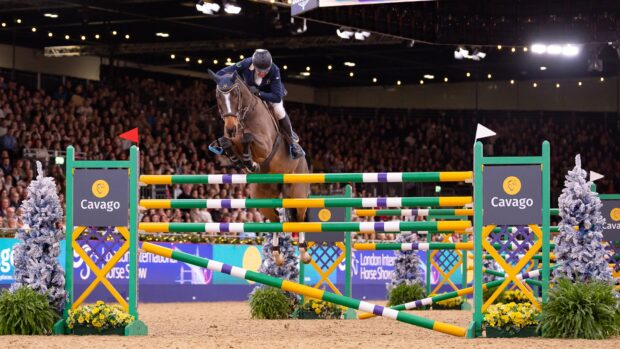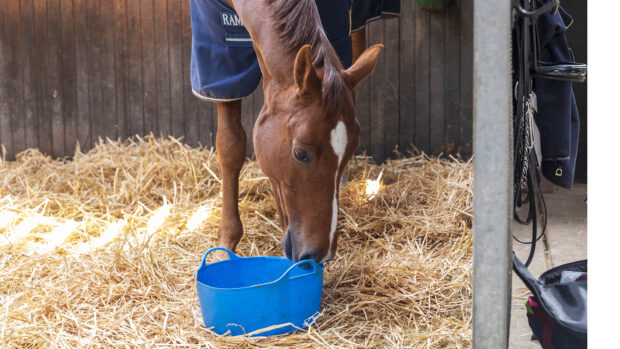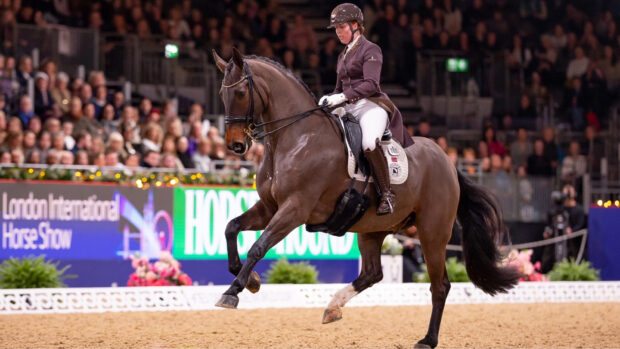Top British dressage rider Laura Tomlinson delves into the complex topic of double bridles
Since my last column, I have had the great privilege and excitement of having my top horse Rose Of Bavaria back in the ring twice after a year off and it felt wonderful. The efforts that go into rehabbing a top horse and rebuilding strength and fitness are immense.
My whole team at home played a part in this and it feels great when the work pays off. There is a buzz in the air on our yard now. Riding the grand prix on “Betty” feels just like slipping back into my comfiest slippers and I hope we can get cracking out on the international circuit again next season.
Double bridles: a badge of honour
A current hot topic in dressage is double bridles – should riders have the choice to compete at top level in a double or a snaffle? This is a very complex issue for me.
Does it mean moving away from the “classical” image of dressage? Originally, the double bridle was a badge of honour; you progressed to riding with a double when you had the skill to do so, including an independent seat and quiet hands.
Historically, the double bridle was used so a rider could ride one-handed with the utmost precision as his sword would be in the other. And, at the risk of sounding like a real oldie, this leads me onto a side note about saluting with the correct – right – hand, which often seems to get forgotten these days.
But we don’t use the double bridle like that anymore, and sometimes it is used too soon in order to achieve results faster. Even when used beautifully, horses’ mouths have changed size and shape enormously over past decades and fitting two bits comfortably is not easy with every horse. For example, my top mare Betty would rather go bitless as she has a small mouth and massive tongue.
“Why insist on the double?”
A double bridle used correctly is not “cruel”, and nor are spurs – they help execute precision and softness. However, some horses may be more comfortable in a snaffle, so why insist on the double? We certainly have changed the way saddles sit for the benefit of the horse and changes in their shape and sensitivity levels, so why not the bridle?
That said, if we have some riders using snaffles and no spurs at top level, does that then reflect badly on those who do still choose to use them? There are not many grand prix horses you can ride through a test at the current championship level without spurs. Even my hottest of horses would be difficult to ride without my little spurs, due to the intricacies of the aids required.
So if we make too many big changes, will the tests we use need to change too? Is this a sacrifice the sport has to make collectively for the sake of social licence? Or is there a way of educating the general public on what is used, how and why? Can we address these issues with good commentary? Social media is a great place to put out a message, but we need to reach the intended audience, not only the existing horsey community.
It can be hard to justify these pieces of equipment when there are people on social media demonstrating incredible horsemanship skills with no tack at all. It is, however, worth reminding the critics that performing some fancy movements at home without a bridle is very different to riding through an entire grand prix in front of a crowd.
It’s not impossible, but if the sport moves in that direction, the breeding of top dressage horses would be turned on its head, as we would need different types of horses.
I wish for a world where we can be open-minded enough to learn from some of the “free riders”, educate the non-horsey public and also maintain the heart of what makes our sport beautiful: the harmony of horse and rider working together to look like one unit.
Now more than ever, there is no room for bad riding or unfair treatment of horses. The equestrian community is on trial and we must convince the jury.
● Do you agree with Laura? Let us know your thoughts on double bridles at hhletters@futurenet.com. Please include your name, nearest town and county for potential inclusion in the magazine.
- This exclusive column will also be available to read in Horse & Hound magazine, on sale Thursday 1 December
You may also be interested in…

Carl Hester: ‘We must step out of our bubble and see how dressage looks from outside’

Horse sport needs to act to avoid being outlawed, warns experts

‘If we don’t change, others will change things for us’: chilling warning to horse sport

Subscribe to Horse & Hound magazine today – and enjoy unlimited website access all year round
Horse & Hound magazine, out every Thursday, is packed with all the latest news and reports, as well as interviews, specials, nostalgia, vet and training advice. Find how you can enjoy the magazine delivered to your door every week, plus options to upgrade your subscription to access our online service that brings you breaking news and reports as well as other benefits.




